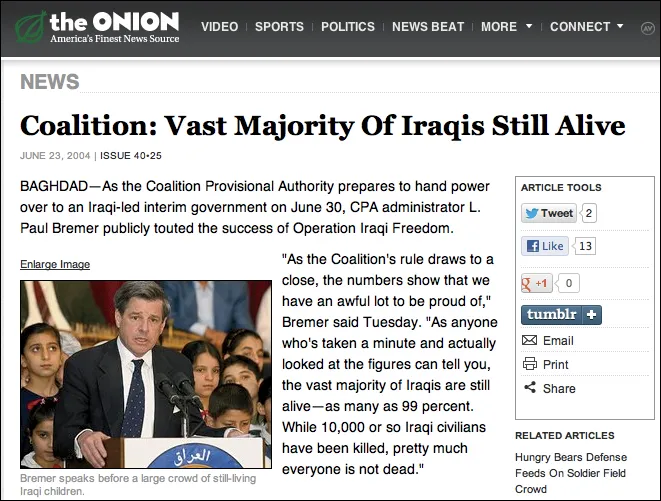
This is a test
- 249 pages
- English
- ePUB (mobile friendly)
- Available on iOS & Android
eBook - ePub
Book details
Book preview
Table of contents
Citations
About This Book
Just as pilots and doctors improve by studying crash reports and postmortems, experience designers can improve by learning how customer experience failures cause products to fail in the marketplace. Rather than proselytizing a particular approach to design, Why We Fail holistically explores what teams actually built, why the products failed, and how we can learn from the past to avoid failure ourselves.
Frequently asked questions
At the moment all of our mobile-responsive ePub books are available to download via the app. Most of our PDFs are also available to download and we're working on making the final remaining ones downloadable now. Learn more here.
Both plans give you full access to the library and all of Perlego’s features. The only differences are the price and subscription period: With the annual plan you’ll save around 30% compared to 12 months on the monthly plan.
We are an online textbook subscription service, where you can get access to an entire online library for less than the price of a single book per month. With over 1 million books across 1000+ topics, we’ve got you covered! Learn more here.
Look out for the read-aloud symbol on your next book to see if you can listen to it. The read-aloud tool reads text aloud for you, highlighting the text as it is being read. You can pause it, speed it up and slow it down. Learn more here.
Yes, you can access Why We Fail by Victor Lombardi in PDF and/or ePUB format, as well as other popular books in Design & Web Design. We have over one million books available in our catalogue for you to explore.
Information
CHAPTER 1

Embrace Failure
Why I Failed
Why This Stuff Is Really Important
Why We Learn from Failure
Why Experience Failure Is Different
Why Design ≠ Experience
Why You Should Keep Reading This Book
Ultimately, we are deluding ourselves if we think that the products that we design are the “things” that we sell, rather than the individual, social and cultural experience that they engender, and the value and impact that they have. Design that ignores this is not worthy of the name.
—Bill Buxton, computer scientist, designer,
and a pioneer of the human–computer interaction field
and a pioneer of the human–computer interaction field
Why I Failed
The year was 2000 and I was employed at a prestigious digital design agency working with a financial information company to create a new website that would revolutionize the research process for institutional investors, the people who manage investments for large companies and municipalities.
“Make it like a Bloomberg Terminal,” is how the client summed it up. My team of designers and programmers winced at his suggestion because we considered the Bloomberg Terminal a powerful but ugly and difficult-to-learn interface design from the dark ages of text-based computers (Figure 1.1). We instead pushed him in the direction of beautiful charts and graphs, software agents that personalized information, and conventional Web navigation that would be familiar to his clients.

FIGURE 1.1
A Bloomberg Terminal.
A Bloomberg Terminal.
Our client hadn’t actually done any research with his customers to understand if they would like his ideas. And neither had we. He was leaning on his expertise in managing similar products and we were leaning on our experience having designed similar products, but neither of us had validated these particular ideas with these particular customers. At the time, the methods we had for validating our ideas were not compellingly useful, and perhaps my team and the client implicitly understood this. We made minimal effort to conduct research with the client’s customers, and he denied us access to them.
With each stage of the project the design and technology accumulated more flaws. When the client decided the team was wrong for the job, another team at my agency replaced us. After more missteps the client’s upper management replaced their team. Eventually the whole project was canceled; the client’s company decided to use off-the-shelf software instead, which was never a success with its customers. In the end the project was a failure, all too common in the early days of the Web.
Ouch. I was a young designer and had never experienced a big failure at work. I felt terrible. No one at our agency wanted to focus on the failures and take time to discuss them, so the team never understood why we failed. Without a good explanation and without something tangible I could do to improve, I sometimes felt depressed and I lost confidence in my skills. Sometimes I became defensive and blamed the “dumb client.”
But I saw that things around me were even worse: clients were firing agencies after as little as a month or clients were suing agencies. Some of the mistakes agencies were making were to be expected. The Internet represented a new world of design and technology that changed on a daily basis. Everyone was learning and experimenting; there were no experts.
Since the time of that first early failure, I’ve contributed to or directly managed over 40 Internet and software projects, some as a designer and some as a product manager. There have been other failures, and even when I understand why I failed it still takes an emotional toll. In spite of my own failures, you’ll see as you read this book that I’m often a harsh critic of my peers’ work. I don’t criticize because I think leading a design project from start to finish is easy. It’s not. It’s hard work. I criticize the outcomes I see because it’s hard work and because failure is still too common. I want all of us to get it right more often, with less of the emotional toll of failure. I hope by reading this book and applying the lessons learned, avoiding failure will be easier for you and those you work with.
I failed mostly because I didn’t have the right methods to discover which of our ideas would give customers an experience they wanted. Since then, those methods have improved significantly.
Why This Stuff Is Really Important
I see the trend of our work going beyond the ubiquitous convenience it is today and becoming a vital part of the infrastructure supporting life in the 21st century. Currently most of our work complements or enhances life; people don’t rely on it as essential yet. An updated status on Facebook, an e-mail to a friend, accessing information on websites . . . if all this were turned off tomorrow people would feel inconvenienced, but they could find work-arounds for all of it.
But that’s changing rapidly. I now make appointments with my doctor online, and the doctor transmits my prescription for medicine directly to my pharmacist online (Figure 1.2). I pay the doctor, the pharmacist, and the health insurance online. As people become accustomed to this way of working—and as service providers become accustomed to the efficiency, accuracy, and cost savings—the old ways will gradually be discontinued. Increasingly, we will rely on digital products and services for everyday matters of life and death.

FIGURE 1.2
With ZocDoc, patients can find a doctor, see the doctor’s schedule, and make an appointment.
With ZocDoc, patients can find a doctor, see the doctor’s schedule, and make an appointment.
We are each the product of our experience. The things we do, the places we go, the people we meet, and the things we use all influence who we are. Over time, as we interact with more and more technology to live our lives, we will spend more of our time looking at screens, and the quality of the design of this technology will have ever greater influence on the quality of our lives.
Why We Learn from Failure
Instead of studying failures, can’t we just study successes and then repeat whatever led to those successes? Yes, this is a good tactic in very simple situations, such as learning how to tie your shoes. There’s not much to be gained by looking at how many ways it’s possible to tie your shoes incorrectly. If you fail, nothing terrible happens.
Any industry that’s important, complex, and dynamic takes the time to examine failures. Aviation, medicine, and manufacturing are three fields that have taught us an enormous number of lessons by studying failures.
Here’s a good example. During World War II a mathematician in the United States named Abraham Wald worked on the problem of deciding where to add additional armor to B-29 bomber planes to keep them from getting shot down. Looking at planes that had successfully returned from flying missions, he determined statistically where the bullets had hit the planes and plotted the locations, as represented schematically in Figure 1.3.

FIGURE 1.3
The dark regions indicate where enemy bullets hit the B-29 bombers in World War II that successfully returned home.
The dark regions indicate where enemy bullets hit the B-29 bombers in World War II that successfully returned home.
The initial reaction to this data might be, “We need to add additional armor to the dark areas because that’s where the bullets are hitting the planes.” Wald’s insight was that the planes with bullet holes in the dark areas returned successfully, so perhaps the planes that did not return were shot down because they had bullet holes in the light areas. His recommendation was to add armor to the light areas instead.
As a statistician, Wald would naturally want to make a decision based on a random sample of all planes, but he didn’t have access to the planes that were shot down. He understood the limitation of his sample and adjusted for it. He successfully dodged survivorship bias, the mistake of learning only from the survivors of some process.
Survivorship bias happens all the time. Witness the marketing hype in our industry that, devoid of research, hails every new method and technology as the fix for people’s business or personal needs. It seems easier to research and analyze companies and products that currently exist instead of searching for information on companies and products that have perished. Doing so can lead us to believe that the survivors have some special quality that helps them survive, when it’s possible they were just lucky (Figure 1.4).

FIGURE 1.4
Survivorship bias as employed by the satirical news website The Onion.
Survivorship bias as employed by the satirical news website The Onion.
The lesson here is very simple: to increase your chances of success and lower your chances of failure, you need to carefully examine cases of both success and failure.
Why Experience Failure Is Different
So we know why studying failure is important, but do we really need another book on failed products? Yes we do, because previous books were about design rather than experience.
To help illustrate the difference, I’ll group the many design-related failures into three broad categories:
1. Engineering failure: The product physically fails to function as designed.
2. Design failure: The product physically works, but is so badly designed people can’t use it.
3. Experience failure: The product physically works and people can use it, but using it is an unde...
Table of contents
- Cover Page
- Title Page
- Copyright Page
- DEDICATION
- HOW TO USE THIS BOOK
- FREQUENTLY ASKED QUESTIONS
- CONTENTS
- FOREWORD
- CHAPTER 1 Embrace Failure
- CHAPTER 2 Get the Right Experience
- CHAPTER 3 Get the Experience Right
- CHAPTER 4 Platform Follows People
- CHAPTER 5 Design for Reflection
- CHAPTER 6 Generate Critical Mass
- CHAPTER 7 Do the Right Thing
- CHAPTER 8 Cannibalize Yourself
- CHAPTER 9 Why We Fail
- CHAPTER 10 Avoid Failure
- Resources
- References
- Credits
- Index
- ACKNOWLEDGMENTS
- ABOUT THE AUTHOR
- RELATED BOOKS FROM ROSENFELD MEDIA